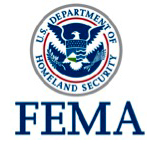
FEMA — Organizing disaster
Ada City-County Emercency Management
Before the Federal Emergency Management Agency (FEMA) existed, obtaining federal aid for disaster relief was very complicated. More than 100 federal agencies had separate disaster-related responsibilities.
The fragmentation of services was based on the type of event and the assistance that was needed. Adding to the complexity were many parallel state and county programs and policies.
 In an effort to streamline the process, The National Governor’s Association approached President Jimmy Carter and requested a more centralized approach to emergency management.
In an effort to streamline the process, The National Governor’s Association approached President Jimmy Carter and requested a more centralized approach to emergency management.
FEMA: A brief overview
FEMA was established under the 1978 Reorganization Plan No. 3 and was activated on April 1, 1979, by President Carter in Executive Order 12127. The new organization encompassed the Federal Insurance Administration, the National Fire Prevention and Control Administration, The National Weather Service Community Preparedness Program, the Federal Preparedness Agency of the General Services Administration and the Federal Disaster Assistance Administration activities from Housing and Urban Development (HUD).
Civil defense responsibilities, formally handled by Defense Department's Defense Civil Preparedness Agency, also were transferred to FEMA. The agency’s first director, John Macy, emphasized the similarities between natural hazards preparedness and civil defense activities. This began the development of an all-hazards emergency management system.
 In 1993, James Witt became director of FEMA; Witt was the first agency head to have previous experience as a state emergency manager. His leadership initiated reforms that streamlined disaster relief and recovery operations, placed a new emphasis on preparedness and mitigation, and focused agency employees on customer service.
In 1993, James Witt became director of FEMA; Witt was the first agency head to have previous experience as a state emergency manager. His leadership initiated reforms that streamlined disaster relief and recovery operations, placed a new emphasis on preparedness and mitigation, and focused agency employees on customer service.
The end of the Cold War helped facilitate the process, allowing FEMA to redirect its limited resources from civil defense into disaster relief, recovery and mitigation programs. The terrorist attacks on Sept. 11, 2001, focused the agency on national preparedness and homeland security issues.
In March 2003, FEMA joined 22 other federal agencies, programs and offices to become the Department of Homeland Security (DHS). The purpose of DHS is to bring a coordinated approach to national security, emergencies and disasters whether natural or man-made.
Everybody has a role in a disaster
When a bad event occurs somewhere in the United States it has an immediate effect on the local population. Local first-responders begin efforts to protect people and property. When the needs are greater than the resources that are available, the event becomes a disaster. Once it is apparent more help is required, the local government issues a Disaster Declaration.
That local declaration brings state resources to bear and may even gain access to some types of federal resources. If the event is too large for the combined state and local resources, the state will declare a disaster. It is at that point full access to federal aid and resources becomes available.
However, the process takes time. Mobilizing and deploying outside resources to a disaster-stricken area could take days. So it is important that people prepare themselves for disaster.
FEMA, through its grant programs, helps local responders and agencies prepare, plan, equip and train for disasters. They also provide free educational resources to private citizens. Videos, books and brochures to help people prepare are available on the web at: http://www.accem.org/familyprep.html .
The ability to take care of yourself and your family during a disaster helps free-up community resources to assist others. Disasters can affect anyone, which is why everyone should prepare. Take steps today to be ready for what tomorrow might bring.
Published 4-12-13